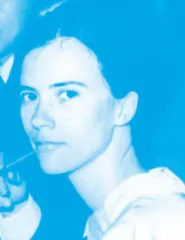9 Scientists Behind Modern Biotech助推现代生物技术发展的九位科学家
作者: 海伦•阿尔贝特

Over the last 25 years, biotech has become a burgeoning worldwide industry. It only became the success it is today on the back of excellent science.
Here is a selection of scientists we think made a significant contribution.
过去25年间,生物技术蓬勃发展,成为全球性产业。它取得今天的成功都是得益于科学的卓越成就。
以下是一些我们认为做出重要贡献的科学家。
1. Károly Ereky (1878—1952)
1. 卡罗伊·埃赖基(1878—1952)
Károly Ereky was the first person to use the term ‘biotechnology’ to describe the transformation of raw materials into useful products using biology. A Hungarian agricultural engineer, he was an expert on the food industry and wanted to apply scientific principles to make food production more efficient and cost-effective. For example, one of his many publications was a book discussing how leaf proteins could be used as a possible food source. Known by some as the ‘father’ of biotechnology, he became the Hungarian Minister of Food in 1919. However, he was probably most well known for an enormous and highly profitable pig farm and slaughterhouse he set up that had the capacity to raise 100,000 pigs per year.
卡罗伊·埃赖基是最先使用“生物技术”一词指称利用生物学知识将原材料转化为实用产品的过程。他是一位匈牙利农业工程师,也是食品工业专家,致力于运用科学原理提高食品的生产效率和成本效益。他著述颇多,其中一本书就探讨了用叶蛋白制造食品的可能性。埃赖基被称为“生物技术之父”,并在1919年出任匈牙利食品部部长。但他最广为人知的事迹,大概还要数开办了一家养猪兼屠宰场,规模大、效益高,每年生猪产能高达10万头。
2. Eva Ekeblad (1724—1786)
2. 埃娃·埃克布拉德(1724—1786)
Swedish countess and scientist Eva Ekeblad was ahead of her time. In 1746, she discovered a technique to make both alcohol and flour from potatoes, a relatively rare vegetable in Sweden at the time. This discovery helped reduce famine by diverting grains used to make alcohol back into the food chain. An entrepreneurial spirit, she also realized the potato flour she created could be used as a cosmetic face and wig powder to replace the poisonous arsenic powder being used at the time.
身为瑞典伯爵夫人的女科学家埃娃·埃克布拉德有着超前的思维。1746年,她发明了制作土豆酒和土豆粉的技术,当时土豆在瑞典还不是常见蔬菜。得益于这一发现,用于酿酒的谷物重回主食行列,从而缓解了饥荒。埃克布拉德颇具创业眼光,她发现自己制造的马铃薯粉还能当化妆扑面粉和假发粉用,足以取代当时常用的有毒砷粉。
3. Wilhelm Roux (1850—1924)
3. 威廉·鲁克斯(1850—1924)
Wilhelm Roux was a clinical doctor, but spent much of his career conducting experiments in the field of embryology in animals, birds and amphibians. The German scientist is most well known for establishing the principles of tissue culture, an extremely widely used technique in modern labs. In an experiment carried out in 1885, he managed to keep neuronal cells taken from a chicken embryo alive in a warm saline solution for 13 days, a technique that was later refined and expanded on by other scientists. He also made enlightened observations on cell distribution during embryo development in studies using frog embryos.
威廉·鲁克斯是一名临床医生,但他将职业生涯的大部分时间投入到了动物、鸟类和两栖动物的胚胎学实验中。这位德国科学家的最著名成就是提出了组织培养的原理,这一技术在现代实验室中的应用极为广泛。他1885年做了一项实验,从鸡胚胎中提取神经元细胞,使其在温盐水中存活了13天,这一技术被后来的科学家进一步完善和扩充。鲁克斯还用青蛙胚胎开展研究,就胚胎发育过程中的细胞分布提出真知灼见。
4. Maurice Lemoigne (1883—1967)
4. 莫里斯·勒穆瓦涅(1883—1967)
Given the current popularity of the topic, it may seem a bit unbelievable that the first biodegradable ‘bioplastic’—polyhydroxybutyrate or PHB—was discovered in 1926 by French biologist and engineer Maurice Lemoigne. He was working with the microbe Bacillus megaterium and discovered that it produced PHB when nutrients were scarce and the conditions were ‘stressful’ for the bacteria. At the time, petroleum was cheap and readily available and so Lemoigne’s discovery was ignored for many years. Now PHB is one of several bio-based and biodegradable plastics on the market. Lemoigne’s other research mostly had a focus on fermentation, water treatment, and soil fertilization.
可降解生物塑料当下讨论热度极高,所以人们多少有点不敢相信,最早的可降解“生物塑料”——聚羟基丁酸酯(PHB)竟在1926年就已问世。它的发现者是法国生物学家、工程师莫里斯·勒穆瓦涅,他研究巨大芽孢杆菌时发现,营养匮乏和状况“紧张”会促使其产生PHB。但当时石油既便宜又充足,所以很多年里,勒穆瓦涅的发现都未引起关注。而到了今天,市面上的生物基可降解塑料也不过几种,当中就有PHB。除此之外,勒穆瓦涅还进行了其他研究,主要集中在发酵、水处理和提高土壤肥力。
5. Jean Purdy (1945—1985)
5. 琼·珀迪(1945—1985)
Jean Purdy was a British research nurse who developed in vitro fertilization along with two colleagues—biologist Robert Edwards and clinician Patrick Steptoe. Purdy came to work with Edwards at the Physiological Laboratory in Cambridge in 1968. They experimented with eggs given voluntarily by infertile women and eventually managed to fertilize one in the lab in 1978. This egg was implanted and became Louise Brown, the first ‘test-tube baby’. Purdy died young of melanoma, but in her career she helped 370 children to be conceived in vitro.
琼·珀迪是一名英国助研护士,与两位同事——生物学家罗伯特·爱德华兹、临床医生帕特里克·斯特普托共同研发了体外受精技术。1968年,珀迪来到剑桥生理学实验室与爱德华兹共事。他们利用不孕女性自愿提供的卵子进行实验,最终于1978年在实验室成功使一枚卵子受精。这枚受精卵被移植回母体后,诞生了世界上第一个“试管婴儿”路易丝·布朗。珀迪因患黑色素瘤英年早逝,但不长的职业生涯中帮助孕育试管婴儿多达370名。
6. Brigitte Askonas (1923—2013)
6. 布丽吉特·阿斯科纳斯(1923—2013)
Brigitte Askonas was born in Austria to Czech parents, but spent much of her life in Canada, the US and the UK. She was head of the immunology division at the National Institute for Medical Research in London from 1976 until she retired. She was instrumental in designing one of the early methods for creating monoclonal antibodies, now widely used for treating cancer and autoimmune disease. She also discovered that immune cells called T-killer cells have the ability to recognize viral subtypes, a principle now being used to develop vaccines against a variety of infections including influenza and HIV. She was asked to join the Royal Society in the UK as a recognition of her achievements in 1973.